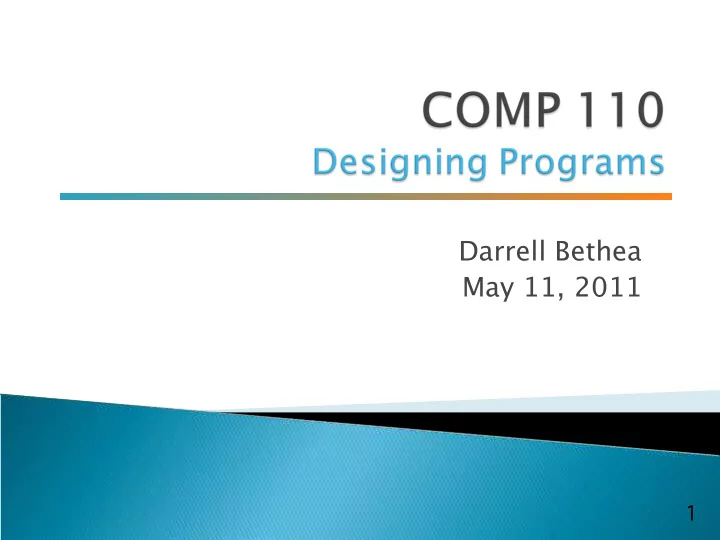

Darrell Bethea May 11, 2011 1
O ffj ce Hours ◦ 1-2 PM today ◦ Come if you don’t have Eclipse working 2
Is Java a high-level language or a low-level language? What does the following Java statement display onto the screen? System.out.println(“Java is great!”);
Object-Oriented Programming Encapsulation, polymorphism, and inheritance Writing Algorithms in pseudocode Variables, arguments, statements, and syntax 4
Our world consists of objects (people, trees, cars, cities, airline reservations, etc.). Objects can perform actions which a fg ect themselves and other objects in the world. Object-oriented programming (OOP) treats a program as a collection of objects that interact by means of actions.
Objects, appropriately, are called objects. Actions are called methods. Objects of the same kind have the same type and belong to the same class. ◦ Objects within a class have a common set of methods and the same kinds of data ◦ but each object can have its own data values.
OOP adheres to three primary design principles: ◦ Encapsulation ◦ Polymorphism ◦ Inheritance
packing things up, only seeing part of what is going on Encapsulation provides a means of using the class, but it omits the details of how the class works. Encapsulation often is called information hiding. 8
A car consists of many parts and is capable of doing many useful things. Important to the driver: ◦ Accelerator pedal ◦ Brake pedal ◦ Steering wheel Not important to the driver: ◦ Fuel injectors ◦ Spark plugs ◦ Water pump
“many forms” Same instruction to mean same thing in di fg erent contexts. ◦ Example: “Go play your favorite sport.” I’d go play football. Others of you would play baseball instead. In programming, this means that the same method name can cause different actions depending on what object it is applied to. More on this in Chapter 8. 10
A way of organizing classes At each level classification becomes more specialized. 11
Classes can be organized using inheritance. A class at lower levels inherits all the characteristics of classes above it in the hierarchy. At each level, classifications become more specialized by adding other characteristics. Higher classes are more inclusive; lower classes are less inclusive.
A set of instructions for solving a problem By designing methods, programmers provide actions for objects to perform. An algorithm describes a means of performing an action. Once an algorithm is defined, expressing it in Java (or in another programming language) is usually easy. 13
Get slice of bread from loaf and put on plate Repeat until enough peanut butter ◦ Put knife into peanut butter jar and get peanut butter ◦ Transfer peanut butter from knife to slice of bread Transfer other slice of bread from loaf to plate Repeat until enough jelly ◦ Put knife into jelly jar and get jelly ◦ Transfer jelly from knife to other slice of bread Put slice of bread (pb side down) on other slice of bread Enjoy!
combination of code and English used to express an algorithm before writing algorithm into code 15
Variables - store a piece of data Statements - instructions to the computer Syntax - grammar rules for a language Arguments - information methods need to carry out its action
Program 1 is on the web page We will look at code tomorrow that will help Honor pledge
Tomorrow Lab 1 Programming help for Program 1 18
Recommend
More recommend